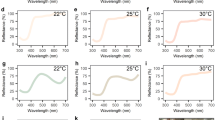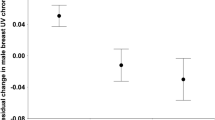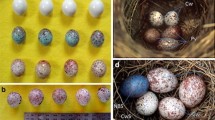Abstract
Most birds and mammals learn characteristics of conspecifics from their parents and siblings. In interspecific brood parasites, however, early social learning could lead to species recognition errors because young are reared among heterospecifics. Conceivably, juvenile parasites might inspect and memorize aspects of their own phenotype, and later match features of encountered individuals to that template. We tested for such self-referent phenotype matching by manipulating feather colors of hand-reared fledglings (n = 21) of the parasitic brown-headed cowbird (Molothrus ater). In simultaneous choice trials (n = 6 trials/subject) between dyed and normal-colored adult females, juvenile cowbirds (< 2 months old) approached more quickly and associated preferentially with individuals that were colored similar to themselves. These preferences remained even when differences between the associative behaviors of juvenile males and females were controlled statistically. Our data imply that cowbirds incorporate their own plumage color into their recognition template. This provides the first evidence of self-referent phenotype matching through experimental manipulation of a recognition cue.
Similar content being viewed by others
Author information
Authors and Affiliations
Additional information
Received: 11 April 2000 / Accepted after revision: 2 September 2000
Rights and permissions
About this article
Cite this article
Hauber, M., Sherman, P. & Paprika, D. Self-referent phenotype matching in a brood parasite: the armpit effect in brown-headed cowbirds (Molothrus ater). Anim Cogn 3, 113–117 (2000). https://doi.org/10.1007/s100710000071
Issue Date:
DOI: https://doi.org/10.1007/s100710000071




